Née à Genève à la fin des années 1980 au milieu du mouvement des occupations dans une cave du boulevard de la Tour, évacuée en 2007, nomade mais toujours active pendant plusieurs années, la Cave 12 a depuis dix ans retrouvé un lieu que Fernando Sixto et Marion Innocenzi, qui président à ses destinées depuis 2001, ont pu librement penser et construire. Portrait d’une salle qui fut, dès le début des années 1990, un des lieux emblématiques des musiques expérimentales en Europe.
Devant la Haute école du paysage, d’ingénierie et d’architecture (HEPIA), au 4 rue de la Prairie, à Genève, un passage gris béton entre deux murs de carreaux blancs descend en pente douce. Il mène à un ancien parking à vélos devenu, en 2013, après de longs travaux, la nouvelle Cave 12, une salle de concerts dédiée aux musiques expérimentales, que Fernando Sixto, son directeur artistique depuis 2001, préfère appeler «musiques de recherche». La Cave 12 a eu plusieurs vies – quatre si l’on ne compte pas celles, innombrables, qui sont passées entre ses murs – mais elles ont toutes commencé dans les caves du 12 boulevard de la Tour, un des trois immeubles du Rhino (acronyme de « Retour des Habitants dans les Immeubles Non Occupés »). Le Rhino fut un des squats les plus célèbres et durables de Genève. De novembre 1988 à juillet 2007, il accueillit des dizaines de personnes en mal de toit – l’occupation était à l’époque un des moyens de pallier la crise qui affectait la ville : en plus du faible nombre de logements disponibles, de nombreux immeubles étaient laissés vides par des propriétaires qui spéculaient sur les prix de l’immobilier. Mais l’occupation eut aussi d’autres effets. Elle rendit possible l’expression et la formation d’une culture qui n’était pas ou peu relayée au sein des lieux officiels. Dans les années 1990 et 2000, une partie non négligeable de la vie culturelle genevoise avait trouvé refuge dans ses squats : au Rhino, dans le groupement d’immeubles de l’Îlot 13, à Artamis (qui accueillait un théâtre, un club et plusieurs salles de concert), à l’Arquebuse (connue pour ses fêtes et ses expositions), au Garage (fondé par un collectif théâtral très actif), au Goulet (un des lieux d’émergence de la scène hip-hop en Suisse Romande), etc., sans parler de l’Usine, haut lieu du rock genevois, qui n’était pas un squat mais un centre autogéré par un collectif d’associations qui avait rénové et aménagé un lieu que la Ville s’était contentée de mettre à leur disposition (une ancienne usine de dégrossissage d’or sur les bords du Rhône), et qui abrite aujourd’hui des salles de concert, un théâtre, un cinéma, une radio, des ateliers, etc.
La cave du 12 boulevard de la Tour est devenue une salle de concerts presque immédiatement après l’occupation. Denis Rollet (qui deviendra musicien et artiste sonore), rejoint quelques mois plus tard par Marie Jeanson (qui aujourd’hui co-dirige le festival Archipel), en furent les principaux initiateurs. Pendant dix ans, ils programmèrent des concerts d’improvisation libre*, de free jazz, de noise rock et de folk indé (Borbetomagus, Nezh Dali, Shirley Hofmann, Joëlle Léandre, Fred Frith, Elliott Sharp, Krakhouse, Volapük, Ned Rothenberg, Fat, Nimal, Third Person, Dorothea Schürch, Phil Minton, Joane Hetu, eRikm, Otomo Yoshihide, etc.), organisèrent des bals et des fêtes de soutien, enregistrèrent deux disques et aménagèrent progressivement l’espace. Née dans la clandestinité, la Cave 12 devint assez vite un des lieux incontournables de la musique expérimentale en Europe. Son économie reposait sur le bénévolat et l’aide constante des habitant.e.s du Rhino. Les musiciens étaient logés et nourris sur place, l’argent des cachets provenait des concerts et des revenus du bar. Ce n’est qu’en 1992, quand fut créé le festival Solo, qu’ils sollicitèrent la Ville pour la première fois. Une subvention leur fut accordée, qui fut renouvelée les années suivantes. En 1997, la Cave 12 entra en dormance.
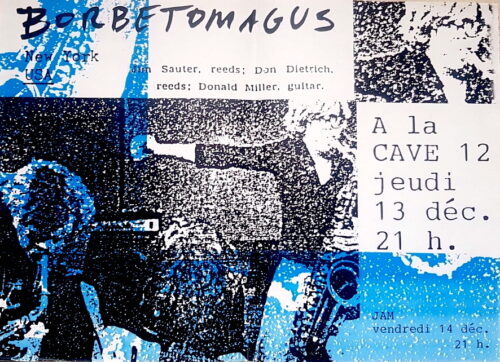
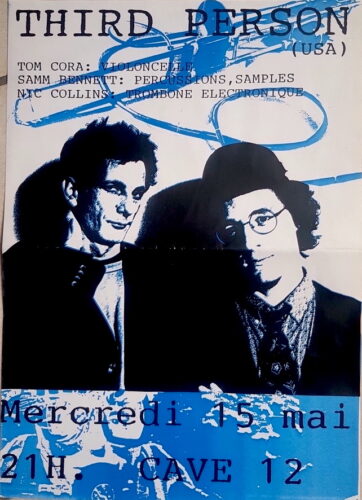
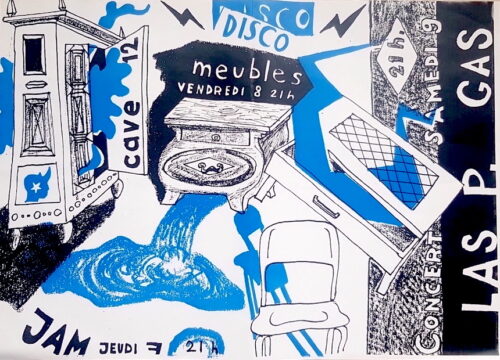
Sa deuxième vie débuta quand, le 29 janvier 2001, Fernando Sixto, à la recherche d’un lieu (et d’un système-son) pour programmer le compositeur et artiste sonore Franciso Lopez, ressuscita les caves du Rhino. Il en devint le programmateur jusqu’au 23 juillet 2007, le jour où le squat fut évacué par la police de l’État. Entretemps, en duo avec Marion Innocenzi, la Cave 12 accueillit un peu plus de 300 concerts qui explorèrent tous les recoins de l’expérimentation sonore : de l’improvisation libre à la japanoise, de la scène australienne naissante au bruitisme francophone, de la harshnoise électronique à la renaissance du rock psyché américain, la programmation était à la fois ouverte et spécifique, attentive aux recherches en cours d’où qu’elles viennent autant qu’à la radicalité et à la cohérence des propositions, autrement dit six années de découvertes et de sidérations qui s’achevèrent en juillet 2007, quand Daniel Zapelli, le procureur général de l’État de Genève, ordonna l’évacuation du Rhino quelques jours après avoir ordonné celui de la Tour. (Chroniques).
Une situation pour le moins paradoxale dans la mesure où, en évacuant le Rhino, l’État mettait fin de facto aux activités d’une salle de concerts subventionnée par la Ville depuis 2003 (à hauteur de 60.000 FS par an, donc beaucoup plus qu’entre 1992 et 1997). Un paradoxe, et une hypocrisie, qui deviendra criant(e) quand, deux ans plus tard, l’État décidera à son tour d’aider une Cave 12 devenue sans domicile fixe. L’opposition entre ceux qui défendent la loi (celle qui protège les propriétaires) et ceux qui défendent les lieux de culture qui la transgressent est insoluble tant qu’on n’admet pas une évidence : que ces lieux de culture ne furent possibles (notamment dans leur économie) que parce qu’il y eut des squats ; qu’il y a une culture des squats qui, bien qu’illégale, enrichit la vie des habitant.e.s des villes concernées ; qu’il faut donc parfois choisir entre la vie légale et la vie culturelle. Ce que Genève, profitant de sa bicéphalie institutionnelle, État d’un côté Ville de l’autre, a semble-t-il refusé de faire.
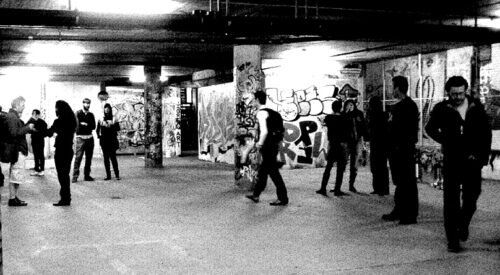
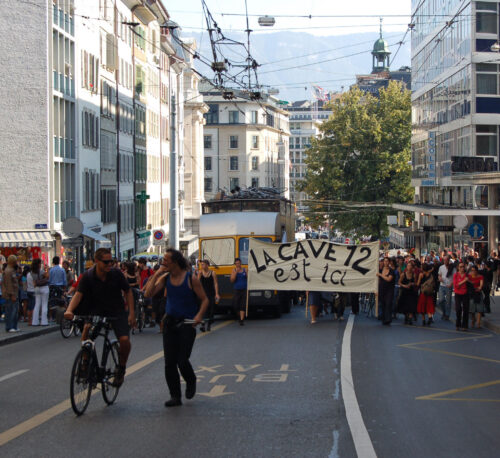
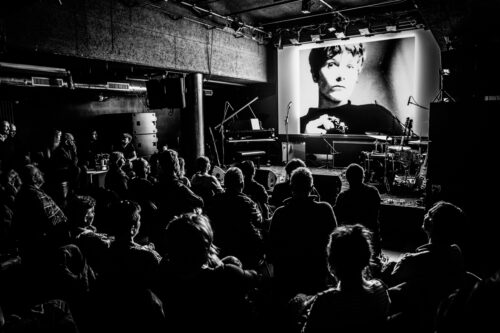
La troisième vie de la Cave 12, entre 2007 et 2013, fut donc nomade et pérégrinante. Sans perdre son rythme d’une centaine de concerts par an, elle passa de l’Usine à l’Écurie (dans l’Îlot 13), du Grütli à l’Étage, de l’AMR au KAB, l’hospitalité des lieux démontrant, si c’était nécessaire, que la culture née dans les squats pouvait trouver refuge ailleurs et semer ses programmations aventureuses dans presque tous les quartiers de la ville. Loin de l’étouffer, l’évacuation contribua d’une certaine manière à la multiplier – ce dont témoignèrent dans les jours qui suivirent les messages venus du monde entier soutenir la Cave 12.



La quatrième vie de la Cave 12, qui dure jusqu’à aujourd’hui, commença le 21 novembre 2013 avec l’inauguration d’un nouveau lieu au 4 rue de la Prairie. Fruit d’une longue et sinueuse négociation avec (et entre) l’État (qui prêta l’espace) et la Ville (qui finança les travaux), la Cave 12 / Prairie est une des très rares salles à avoir été pensée et construite afin d’accueillir des concerts de musique expérimentale : les dimensions, la conception de l’espace (cuisine-bureau-loge d’un côté, salle-bar-salon de l’autre), l’acoustique (très mate de manière à éviter au maximum les réverbérations), le système-son (six caissons de basse et huit haut-parleurs King&Freitag, une table de mixage analogique Midas Venice F-32), etc., tout a été conçu dans la perspective d’une musique possiblement extrême, dont la référence fut, dès le début du projet, celle du musicien et compositeur polonais Zbigniew Karkowski, un habitué de la première Cave (et connu pour éprouver les limites des systèmes-sons sur lesquels il jouait). Mort un mois après son ouverture, il n’eut malheureusement jamais la chance d’y jouer.
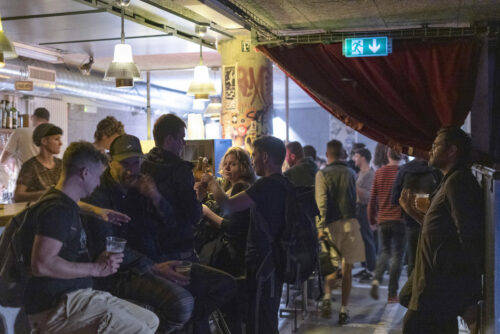


Fernando Sixto a toujours programmé les concerts de la Cave 12 à partir des propositions qu’il recevait. Depuis quelques années, il en reçoit en moyenne trente par jour, dont une quinzaine de recevables. Il faut donc écouter et choisir, ce qu’il fait quotidiennement depuis vingt-deux ans. Je lui a demandé s’il pouvait dresser une liste des styles successifs qui avaient dominé les musiques de recherche depuis la fin des années 1990. Il s’agit moins de styles, m’a-t-il répondu, que de zones géographiques : l’évolution des arts sonores est une affaire de territoires et plus précisément de milieux. Quel seuil de saturation un milieu de pratiques doit-il atteindre pour qu’une nouvelle musique en émerge ? Un cycle dure en moyenne cinq ans. Entre la fin des années 1990 et le début des années 2000, il y eut la japanoise ; puis la scène australienne ; il y eut ensuite la renaissance du rock psyché américain ; puis la scène néo-punk et post-techno anglaise ; puis le rock noise norvégien ; maintenant il y a la scène africaine, dont le festival ougandais Nyege Nyege est un des emblèmes – le musicien ougandais Ocen James sera en concert à la Cave 12 le 31 mai prochain en duo avec Rian Trenor.
Je lui ai demandé quels étaient ses souvenirs les plus marquants : son premier concert à la Cave 12 avec Francisco Lopez, qui faillit mal tourner, quatre haut-parleurs sur huit tombèrent en panne au cours de la balance et un cinquième pendant le concert, mais, aux dires de tous, ce fut un des plus beaux ; les performances musicales de Zbigniew Karkowski, le premier à lui avoir fait éprouver la physicalité du son ; un concert de Kevin Drum en 2016 au cours duquel il poussa les caissons de basse jusqu’au point vibratoire où la membrane se mit à battre contre la structure des haut-parleurs ; la performance au violon augmenté d’un tapis de pédales d’effets de Jessica Moss un soir de novembre 2021 ; les propositions toujours nouvelles des musiciens australiens Will Guthrie et Anthony Pateras ; un concert du musicien iranien Sote en novembre 2022 qui, plutôt que de faire le set prévu, projeta dans un noir total une sélection de ses enregistrements de manifestations à Téhéran.
Cave12_Jessica_Moss_7Novembre2021_long from Association So Close on Vimeo.
Un concert me revient en mémoire. Celui du saxophoniste japonais Masayoshi Urabe le 20 octobre 2004. Le programme sur le site de la Cave 12 dit qu’il jouait ce soir-là au côté du guitariste Rinji Fukuoka, mais je ne me souviens que de lui. « Ce saxophoniste rampant, cancrelas issu du BRUT » écrit Fernando Sixto sur la page du concert. Il ne jouait pas, en effet, il rampait, son saxophone raclait le sol de béton, ce qui en sortait était un râle, une agonie, et en même temps un raclement, le frottement d’un souffle si dense qu’il semblait gratter le laiton. Sa présence n’était pas moins étrange, corps vacillant, involué, au bord du noir ou de la disparition et pourtant si solide et consistant qu’on l’aurait dit de pierre. Et il bougeait, il avançait, parallèle au sol, à la manière d’un insecte, en effet, carapacé de sons, dur, mobile, souffle et métal. Il ne jouait pas, il était la musique faite corps, friable et dense, tout entière concentrée dans ce mouvement de reptation et tout entière dans nos corps à l’écoute, abasourdis autant qu’éberlués, voyant-entendant le si peu vraisemblable et le très réel.
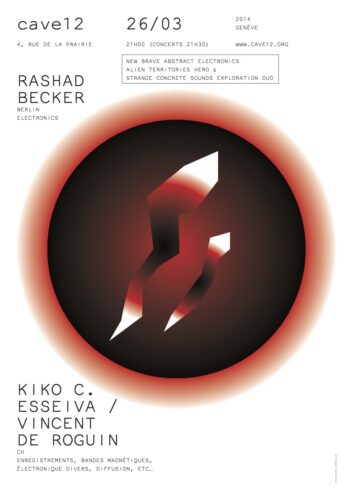
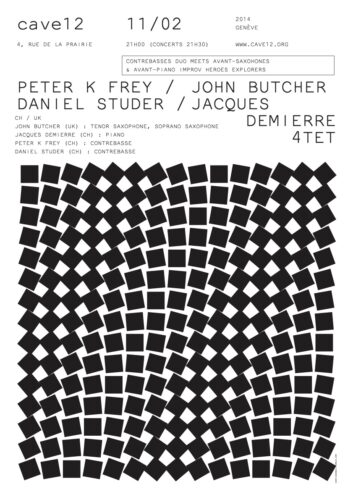

Dix-neuf ans ont passé. Ce mercredi 12 avril 2023 est jour de concert. Passé les deux doubles-portes qui isolent hermétiquement la salle de l’extérieur, la Cave 12 bruisse déjà des conversations et des musiques des passeurs de disques. À droite, un espace rencoigné de tables et de chaises où l’on peut boire et discuter aux sons de deux haut-parleurs marqués au fer brûlant de la musique de Zbigniew Karkowski, souvenirs de la première Cave 12. Encore en état de marche (relatif), ils diffusent les musiques des platines. Entre cet espace et le bar, une table où s’entassent cassettes, vinyles, revues et livres. Quelques trésors affleurent, comme ce double vinyle de Mika Vaino, enregistrement de son dernier concert à la Cave, le 12 avril 2007, deux mois avant sa mort.
Pour accéder à la salle proprement dite, il faut passer le rideau de velours rapiécé aux franges usés par le temps et les corps, autre souvenir. Les gens vont et viennent. Les instruments attendent les musiciens. Un tapis a été étendu devant la scène, derrière quelques chaises en arcs de cercle. Au programme, The Dwarfs of East Agouza, trio égyptien-américain-canadien né au Caire, précédé de Hassan Wargui, joueur de banjo et chanteur amazigh du sud du Maroc. Hassan Wargui est un brillant représentant de la musique berbère de l’Anti-Atlas, mais la performance phare de la soirée fut sans conteste celle des trois Dwarfs. J’ai rarement assisté à un concert aussi libre et aussi peu prévisible. Commencé sous les auspices du noise le plus conséquent – larsens d’Alan Bishop approchant-éloignant sa guitare de l’ampli, riffs saturés de Sam Shalabi, beats de Maurice Louca puisant dans l’infra-basse – il prit assez vite une tournure shaabi, passant sans rupture du bruitisme à la musique populaire égyptienne, comme s’il fallait aux auditeurs de la Cave 12 ce sas sonore pour accéder aux délices d’Agouza. La suite ne fut pas moins exploratoire, la shaabi se dissémina en free débridé, qui nous mena au blues (Alan Bishop), le blues au spoken word déclamatoire (toujours Alan), corps conducteur vers le rock psyché de Sam Shalabi qui, après un temps suspendu, laissa sa place aux couches rythmiques arabisantes et souvent abrasives mais toujours hypnotiques de Maurice Louca, et ainsi de suite pendant plus d’une heure d’un art sonore aux sentiers qui ne cessent de bifurquer.
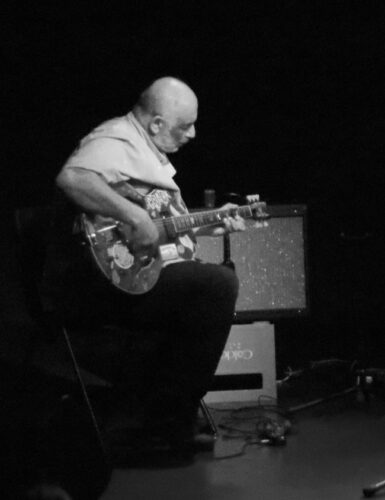
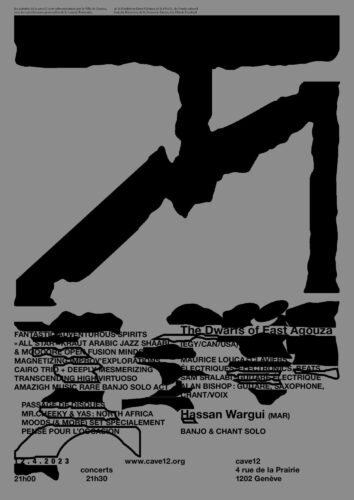

Trente-cinq ans après ses premiers pas, la Cave 12 est aujourd’hui à l’abri, au moins pour quelques années encore. La subvention de la Ville vient d’augmenter et l’État devrait bientôt revenir dans le jeu après une longue absence. Tous les ans, un des concerts de l’année précédente sort en vinyle sur le label de la Cave, dont s’occupe Marion Innocenzi – mon préféré est le vlan_voilà de Günter Müller et Norbert Möslang paru en 2017. À venir ce dimanche 23 avril, Carl Stone, pionnier américain du laptop live et maître du sampling à l’ordinateur précédé de la turntablist anglaise Niknak aux platines et à l’électronique, mais je veux pour finir citer la présentation qu’en propose Fernando Sixto, dont les mots reçus chaque semaine n’ont jamais cessé de réjouir ses lecteurs, même (et surtout) quand ils étaient loin de Genève : OVER THE TOP ELECTRONICS QUESTS SOUNDS IRREDUCTIBLE FIGURES : FROM RADICAL INNOVATION BOUNDARIES PUSHING INCREDIBLE WIIIIDE MUSICAL POLYMATH TURNTABILIST TO ABSOLUTE HISTORIC CULT KING OF SAMPLING & LIVE COMPUTER MUSIC PIONEER HERO 70th ANNIVERSARY TOUR.

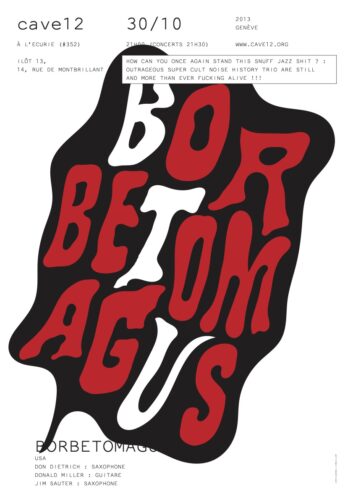
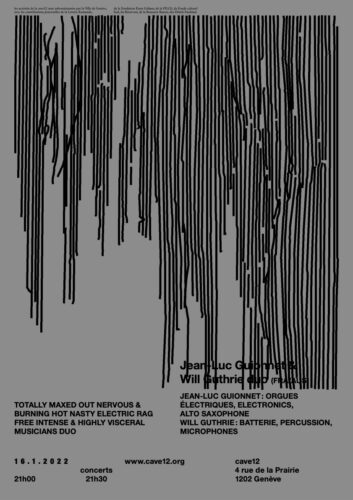
Bastien Gallet
Découvrez les videos de la Cave 12.
* Un film a été déterminant dans l’histoire de la Cave 12, Step Across the Border de Nicolas Humbert et Werner Penzel (1990), un documentaire consacré au musicien anglais Fred Frith, figure majeure de l’improvisation libre et de l’avant-rock. Pour Marie Jeanson, Denis Rollet, Marion Innocenzi et Fernando Sixto, le visionnage de ce film eut l’effet d’une révélation.
Affiches © Harrison Vermot, Denis Rollet, Xavier Robel
Photos © Marion Innocenzi, Serges Frühauf, Vania Aillon



)



